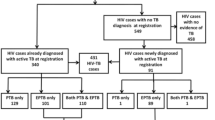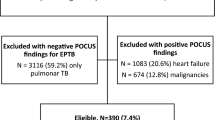Abstract
Background: In the majority of sub-Saharan African countries, the absence of computed tomography facilities makes abdominal ultrasound (US) an alternative diagnostic tool in the clinical investigation of infectious and noninfectious complications of human immunodeficiency virus (HIV)–infected individuals. We studied the abdominal US findings in Central African adult AIDS patients to determine whether the findings were consistent between different population groups and neighboring countries. We performed a longitudinal study of AIDS patients and age- and sex-matched HIV-negative adults referred for abdominal US at two tertiary referral city hospitals: the Gecamines Sendwe Hospital (GSH), Lubumbashi, Congo, and the University Teaching Hospital (UTH), Lusaka, Zambia.
Methods: Between 1992 and 1996, abdominal US findings in 900 adults (300 Congolese adults from GSH and 600 Zambian adults from UTH; age range = 15–55 years) with a diagnosis of AIDS referred for diagnostic imaging from the inpatient medical wards were recorded; 900 abdominal ultrasound findings from age and sex-matched HIV-negative adults were studied for comparative purposes.
Results: Abdominal US for diagnostic purposes in AIDS patients is requested by clinicians for a range of primary clinical indications: abdominal pain, fever of unknown origin, hepatosplenomegaly, lymphadenopathy, and abnormal liver function tests. Compared with the HIV− individuals, the AIDS group of patients had a significantly higher proportion of splenomegaly (35% vs. 24%; p≤ 0.001), hepatomegaly (35% vs. 22%; p= 0.001), lymphadenopathy (31% vs. 11%; p≤ 0.001), biliary tract abnormalities (25% vs. 12%; p≤ 0.001), gut wall thickening (15% vs. 5%; p≤ 0.001), and ascites (22% vs. 9%; p≤ 0.001). There were no differences in renal tract and pancreatic abnormalities between the AIDS and HIV− groups. There were significantly fewer gallstones in the AIDS group (23% vs. 75%; p≤ 0.001). These patterns of abdominal US abnormalities were consistent across both hospitals.
Conclusions: Diagnostic imaging by abdominal US is commonly used in the management of a variety of clinical indications in Central Africa. The changes seen on abdominal US in AIDS patients appear uniform across the two countries in Central Africa. These findings may have implications for the radiologist, especially in developing countries, where accurate microbiological or pathologic diagnosis of infectious and noninfectious diseases afflicting the HIV-infected patient is often not possible and US is sometimes relied upon as a “diagnostic” investigation by many physicians. Further studies are required to define patterns of clinical findings, plain films, and pathologic and laboratory correlates with US to develop and refine diagnostic algorithms for clinical use in resource-poor countries.
Similar content being viewed by others
Author information
Authors and Affiliations
Additional information
Received: 24 June 1999/Revision accepted: 8 September 1999
Rights and permissions
About this article
Cite this article
Tshibwabwa, E., Mwaba, P., Bogle-Taylor, J. et al. Four-year study of abdominal ultrasound in 900 Central African adults with AIDS referred for diagnostic imaging. Abdom Imaging 25, 290–296 (2000). https://doi.org/10.1007/s002610000035
Issue Date:
DOI: https://doi.org/10.1007/s002610000035




